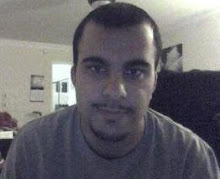 In a Jan. 13, 2008 NBA game versus the Memphis Grizzlies, the Los Angeles Lakers' Center Andrew Bynum injured his left knee after landing awkwardly on his teammate Lamar Odom, ending Bynum's season. The following year, with about seven minutes left in a Jan. 31, 2009 game also versus the Memphis Grizzlies, Bynum again injured his knee, only this time his right knee after teammate Kobe Bryant crashed into it after missing a lay-up.
In a Jan. 13, 2008 NBA game versus the Memphis Grizzlies, the Los Angeles Lakers' Center Andrew Bynum injured his left knee after landing awkwardly on his teammate Lamar Odom, ending Bynum's season. The following year, with about seven minutes left in a Jan. 31, 2009 game also versus the Memphis Grizzlies, Bynum again injured his knee, only this time his right knee after teammate Kobe Bryant crashed into it after missing a lay-up.What makes these two injuries interesting are their astounding similarities. In both cases:

- Andrew Bynum was the one injured
- It occurred in the month of January on a date containing the numerals 1 and 3 (in 2008 it was the 13th and in 2009 it was the 31st)
- Was in a game versus the Memphis Grizzlies
- Caused by/involved a fellow teammate (2008 Odom and 2009 Bryant)
- Was an injury to the knee (2008 left knee, 2009 right knee and different diagnoses)
- Return estimated to be by the end of the season (2008 season never returned, 2009 yet to return)
- Bynum had been playing best stretch of basketball before injury (2009 averaged 26 points, 14 rebounds, and three blocks in last five games)
However, the circumstances and results of the two injuries were different in a few significant ways. In the 2008 injury, Bynum was diagnosed with a dislocated left kneecap, and was later informed that it required surgery, which further prolonged his timetable for return to be the following season. In the 2009 season injury, Bynum was at first diagnosed with a sprained right knee. Later, on Feb. 2 he was diagnosed officially with a torn medial collareral ligament (MCL), which is located on the left side of the right knee. MCL's are not as severe as dislocations, and they do not require surgery.
The mere difference in diagnoses is enough to keep Laker fans believing Bynum will return before the season's end. Along with a diagnosis this year, Bynum was given a timeframe of eight to 12 weeks for return. A best case scenario would mean a March 29 return in a game in Atlanta versus the Hawks. Twelve weeks would mean returning by the end of the first round of play-offs, still giving the Lakers a great amount of games to use Bynum's height, strength, skill, and presence to their great advantage.
However, the Lakers' win-loss record alone is keeping fans optimistic and cheery. After Friday evening's victory over the Minnesota Timberwolves, the Lakers have won their last 14 of 17 games since Bynum was injured. Currently, with 50 wins and 12 losses on the season, the Lakers hold the league's best record, and have held it for a few weeks now.
Even last season, without Bynum, the Lakers were only two victories away from a championship--that is, after the team management pulled off a rather uneven trade to acquire all-star Pau Gasol.
Fortunately, Bynum, his teammates, and fans are not as worried about this season's injury as they are about last season's. After rehabilitating from a serious injury last year, Bynum knows exactly what it takes for him to return to basketball shape, and he told the media he is confident he can make it back this season. According to Lakers.com Injury News, "Lakers center Andrew Bynum has progressed in his rehabilitation regiment to include cardio work on a stationary bicycle as well as on a Precor machine. The Precor machine simulates cross country skiing and is popular with athletes because it does not create any impact on one’s joints."
Los Angeles awaits his return.





